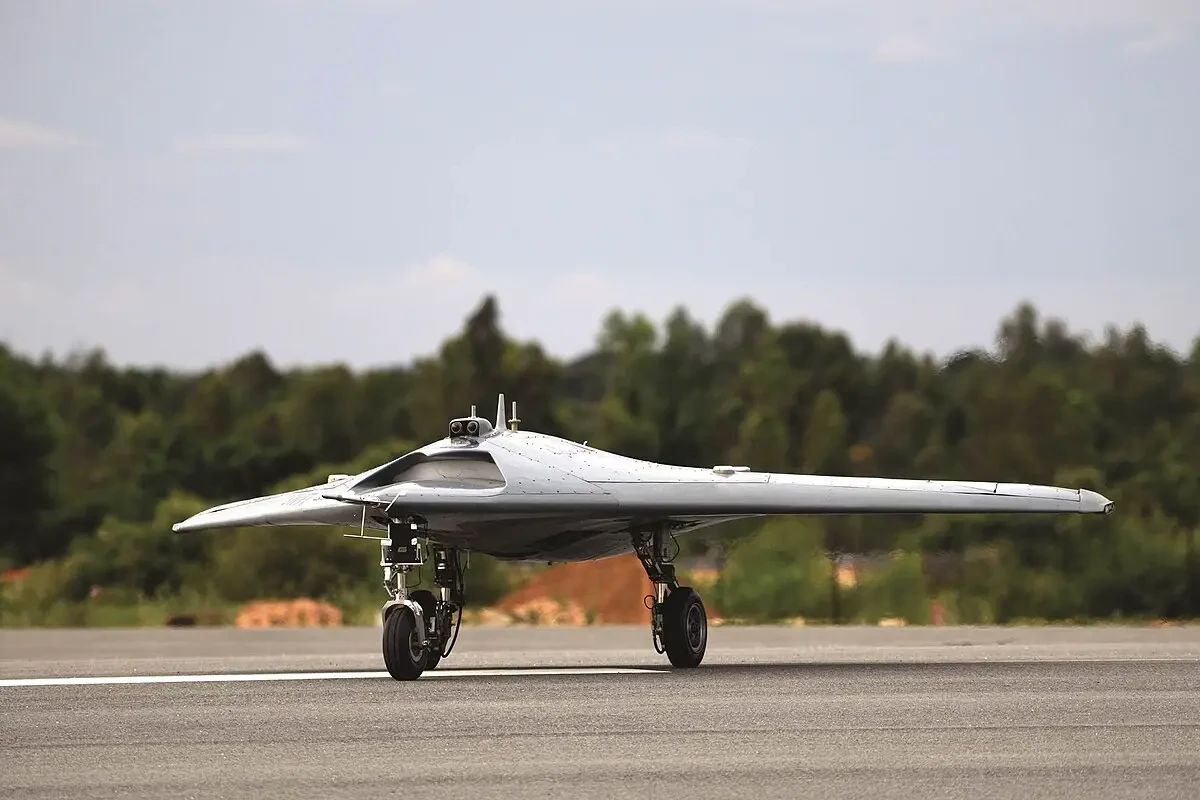The Ghatak (English: “deadly”) is an Indian stealth drone made for combat missions. It is a type of unmanned combat aerial vehicle (UCAV), which means it can fly and fight without a pilot inside.
Because the project is highly secret, many details are not shared with the public. But the information available shows that it is an advanced and powerful weapon system for the future.
The Ghatak is being built by the Defence Research and Development Organisation (DRDO) for the Indian Air Force (IAF). It is still in the early stage of development. This project shows India’s effort to step into the strategic field of autonomous drones. The goal is to give the IAF a home-made stealth combat drone that can carry out missions even in dangerous enemy-controlled skies.
The Ghatak project follows India’s “Aatmanirbharta” (self-reliance) defence plan. Its purpose is to cut down dependence on foreign weapons and to strengthen India’s own military technology.
The Ghatak came from an earlier idea called the Autonomous Unmanned Research Aircraft (AURA), first shown in 2007. The goal was to build a self-controlled or autonomous combat drone (UCAV). While DRDO led the project, the design work was later given to the Aeronautical Development Agency (ADA).
In the early planning stage, the project was officially named Ghatak. In 2016, it got government approval and funding, which began the main development work.
Because the project is very complex, it is being developed in phases. Work first started with a test drone called the Stealth Wing Flying Testbed (SWiFT). This was used to check aerodynamics, self-flying or autonomous controls, and stealth features. In 2022, the prototype had its first successful flight.
The Aeronautical Development Establishment (ADE) planned to start building the full Ghatak UCAV in Bengaluru by 2024. But due to government delays and funding issues, the first full test flight is now expected only by 2025-26, and the Indian Air Force may get it by 2030.
Specifications
The full-size Ghatak drone will weigh around 13 tons, making it bigger than most drones in the world. Though many details are secret, here are the known points:
● Weight: 13,000 kg (28,660 lbs)
● Shape: Flying wing design for better stealth
● Speed: High-subsonic (just below the speed of sound),usually means around 950-1,100 km/h.
● Engine: First with a Russian turbofan, later may use India’s Kaveri engine (by 2035) with better efficiency and low heat signature
● Payload: Can carry up to 1.5 tons of weapons and sensors inside a hidden bay for stealth
● Control: Fully autonomous, but can be managed from the ground if needed
● Stealth: Low radar visibility because of its special design
Technical Development
The most important feature of the Ghatak UCAV is its stealth ability, which needed a lot of Indian research and development. It is being developed together with the AMCA fighter jet project, so both can share stealth technologies.
The Indian Air Force (IAF) plans to give the drone advanced AI technology and autonomous systems. This will allow it to do automatic takeoff and landing, follow preset routes, and use smart decision-making in combat.
India’s military plans to build different versions of the Ghatak drone, including one for Combat Air Patrol (CAP) and air-superiority missions. Instead of a single model, there will be a family of UCAVs for different tasks. The goal is to get at least 150 Ghatak units, according to reports from Grey Dynamics UK’s intelligence platform media.
Mission
India is building the Ghatak drone because of ongoing tensions with Pakistan and China. It will help the Indian Air Force in long-range strikes, watching sensitive border areas, and destroying enemy air defense systems.
The Aeronautical Development Agency (ADA) calls the Ghatak a fast, self-defending drone that can also fire weapons. Its roles will include precision strikes and ISR missions (intelligence, surveillance, and reconnaissance).
The Ghatak UCAV can also act as a “loyal wingman”, flying alongside fighter jets to do forward scouting and attack targets, while keeping the pilots at a safer distance.
The 13-ton size of the Ghatak gives room for more weapons, advanced sensors, and longer missions. Its stealth design lets it enter dangerous airspaces safely without risking human pilots.
Criticism and Challenges
Even with good technical progress, the project is stuck due to government approvals not being cleared. This has pushed the timeline to 2030, which may create a gap in India’s military strength.
In 2024, the project’s first director raised concerns after parts of the work moved from the successful ADA agency to ADE, which has a weaker track record.
Conclusion
The DRDO Ghatak is an important step in India’s plan to build stealth autonomous drones. It shows India’s push for homegrown defence technology focused on stealth and autonomy.
The knowledge gained from this project can help build future Indian autonomous systems. But there are still challenges like engine development, government approvals, and finishing the project. Even so, the Ghatak’s role in air combat missions proves India’s growing strength in aerospace defence.
